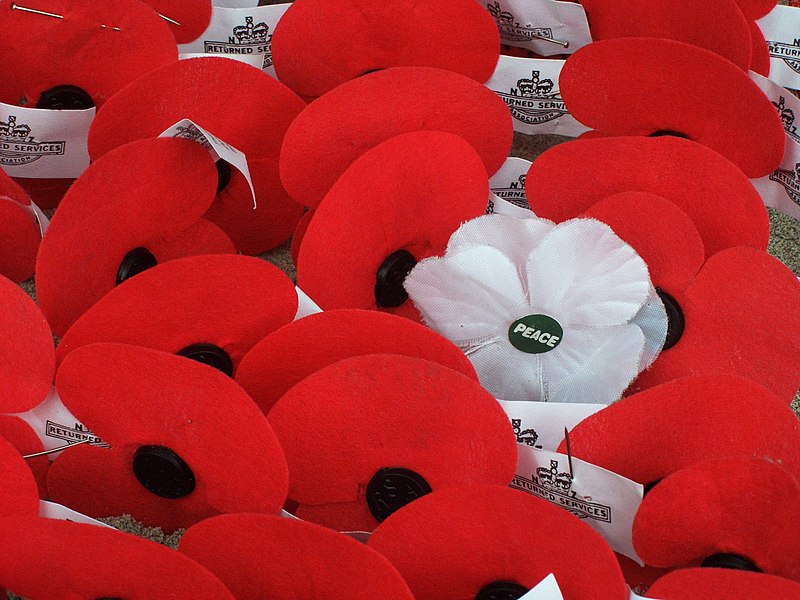Welcome to David Mundy's nearly-daily blog. David retired after 37 years as a United Church minister (2017)and has kept a journal for more than 40 years. This blog is more public but contains his personal musings and reflections on the world, through the lens of his Christian faith. Follow his Creation Blog, Groundling (groundlingearthyheavenly.blogspot.ca) and Mini Me blog (aka Twitter) @lionlambstp
Friday, November 08, 2013
White or Red on the Lapel?
Aren't you impressed by my restraint? So far no "Lying Liars and the Lies they Tell" blog entry, although last Sunday's missive was close.
I'll take you in another direction instead. There has been a tempest in a flower field in Ontario over the distribution of white poppies, along with the traditional red. They are peace poppies and some are arguing that they are offensive to veterans. The Canadian Legion is making noises that it may sue those who are distributing them, which, despite my respect for the Legion, seems downright silly. I have addressed the white poppy around the time of another Remembrance Day, but just so you are aware of the history
In 1926, a few years after the introduction of the red poppy in the UK, the idea of pacifists making their own poppies was put forward by a member of the No More War Movement (and that the black centre of the British Legion's red poppies should be imprinted with "No More War"). Their intention was to remember casualties of all wars, with the added meaning of a hope for the end of all wars; the red poppy, they felt, signified only the British military dead. However they did not pursue the idea. The first white poppies were sold by the Co-operative Women's Guild in 1933. The Peace Pledge Union (PPU) took part in their distribution from 1934, and white poppy wreaths were laid from 1937 as a pledge to peace that war must not happen again. Anti-war organizations such as the Anglican Pacifist Fellowship now support the White Poppy Movement.
In Britain the Legion has stated that they have no problem with the distribution of white poppies, which seems sensible. After all, poppies became a symbol after the "war to end all wars" (WWI), so its not as though this is some quasi-religious artifacts going back centuries. The white poppy is a way of augmenting, not negating the message of Remembrance Day.
I have considered wearing a white poppy as well as the red, although if I lost the white one as often as I manage to lose the red one it wouldn't be around for long. I do wear a red poppy every year, and all through my ministry we have observed Remembrance Sunday in the congregations I have served. I always make a point though of concluding our remembrance with a commitment to peace, which I think the white poppy is meant to symbolize. Our first allegiance as Christians is to the Prince of Peace, even as we express our gratitude to veterans for the price they have paid on behalf of others.
What do you think? Is the white poppy an act of disrespect to our veterans or a statement about the desire for a peaceful world without violence? I think I asked before, but would you wear one?

I would wear both, the red and the white....
ReplyDeleteLike Judy, I would wear both. I do not consider the white poppy to be disrespectful in any way to our veterans.
ReplyDeleteMy father fought in Burma in WW2, and you would not find anyone today who is more opposed to war. I see no connection between wishing for peace and an end to wars, and disrespecting those who fought in them.
I wear both, have for a number of years. My Dad was in WW2, in the navy. He signed up early and forged his age so he could join. He walked in Remembrance Day parades and wore both the red and the white poppy. He died in 2000, and every year I go to a service on Remembrance Day and wear the red and white for him. He always told me that anyone who was in a war would wear a poppy for peace.
ReplyDelete"My Dad was in WW2, in the navy. He signed up early and forged his age so he could join."
ReplyDeleteAre you my sister? :-)